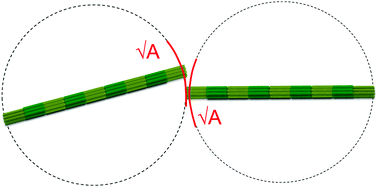Effect of ionic strength on the structure and elongational kinetics of vimentin filaments†
Abstract
Intermediate filaments are a major structural element in the cytoskeleton of animal cells that mechanically integrate other cytoskeletal components and absorb externally applied stress. Their role is likely to be linked to their complex molecular architecture which is the product of a multi-step assembly pathway. Intermediate filaments form tetrameric subunits which assemble in the presence of monovalent salts to form unit length filaments that subsequently elongate by end-to-end annealing. The present work characterizes this complex assembly process using reconstituted vimentin intermediate filaments with monovalent salts as an assembly trigger. A multi-scale approach is used, comprising static light scattering, dynamic light scattering and quantitative scanning transmission electron microscopy (STEM) mass measurements. Light scattering reveals the radius of gyration (Rg), molecular weight (Mw) and diffusion coefficient (D) of the assembling filaments as a function of time and salt concentration (cS) for the given protein concentration of 0.07 g L−1. At low cS (10 mM KCl) no lateral or elongational growth is observed, whereas at cS = 50–200 mM, the hydrodynamic cross-sectional radius and the elongation rate increases with cS. Rgversus Mw plots suggest that the mass per unit length increases with increasing salt content, which is confirmed by STEM mass measurements. A kinetic model based on rate equations for a two step process is able to accurately describe the variation of mass, length and diffusion coefficient of the filaments with time and provides a consistent description of the elongation accelerated by increasing cS.



 Please wait while we load your content...
Please wait while we load your content...